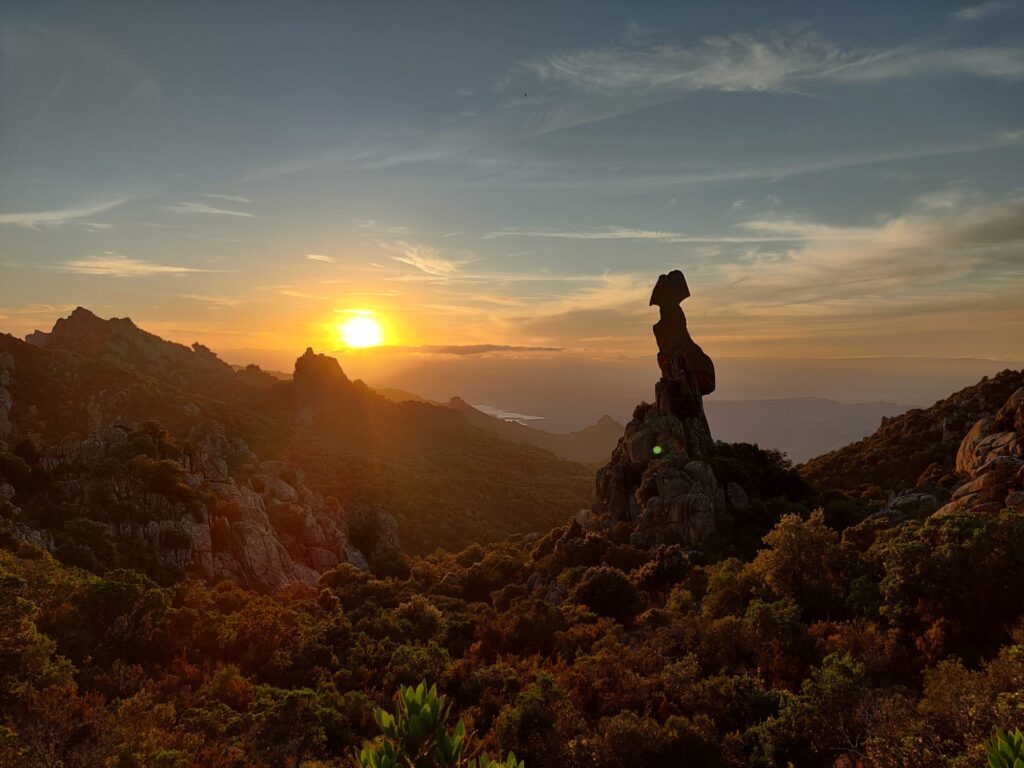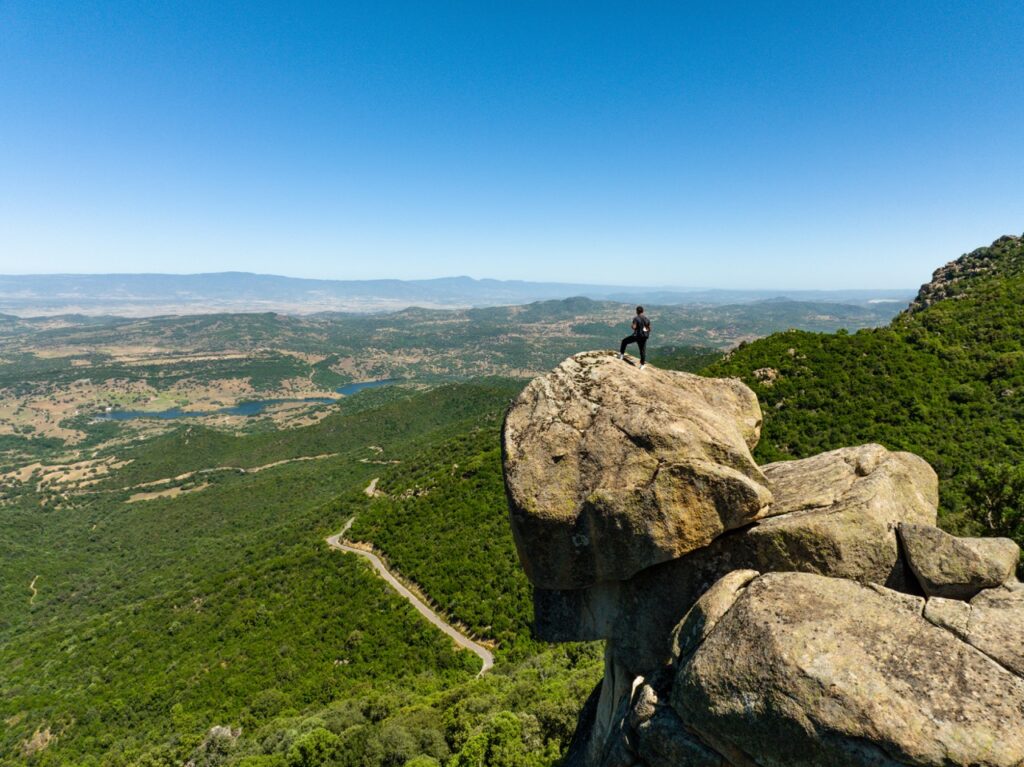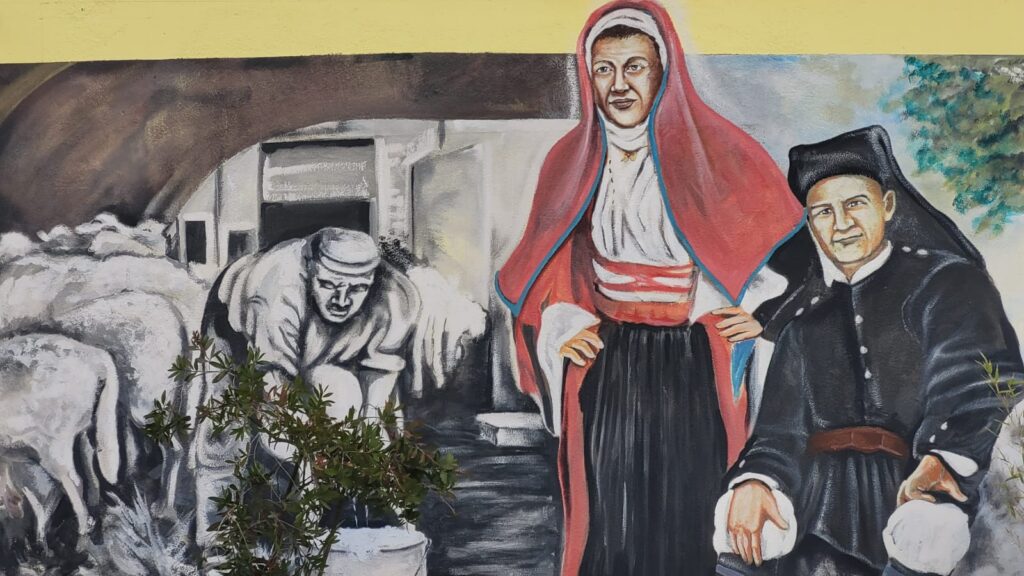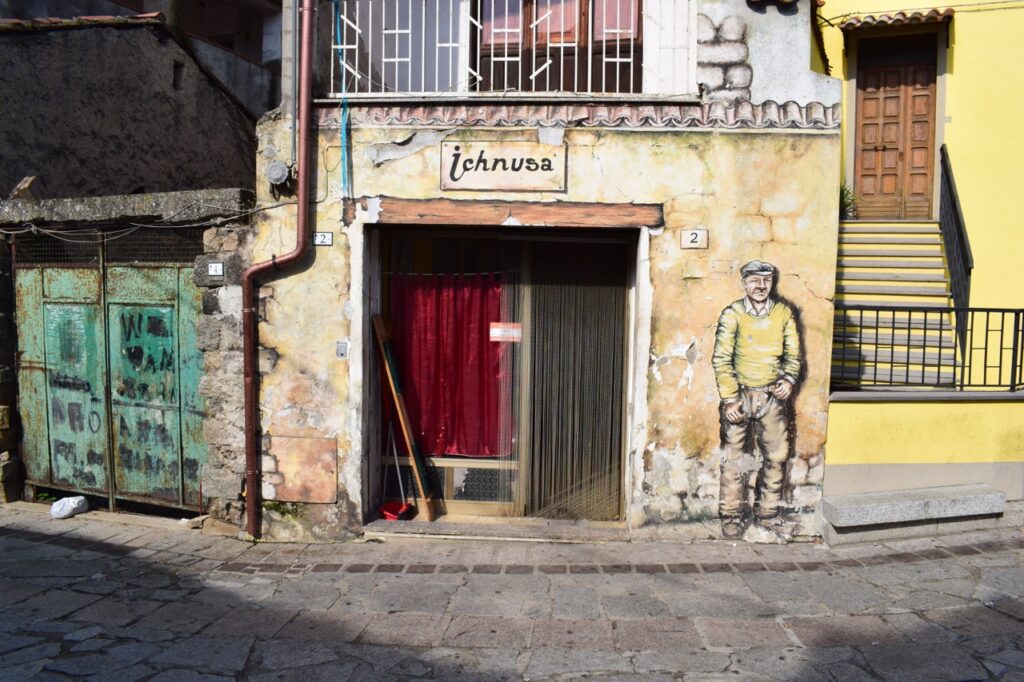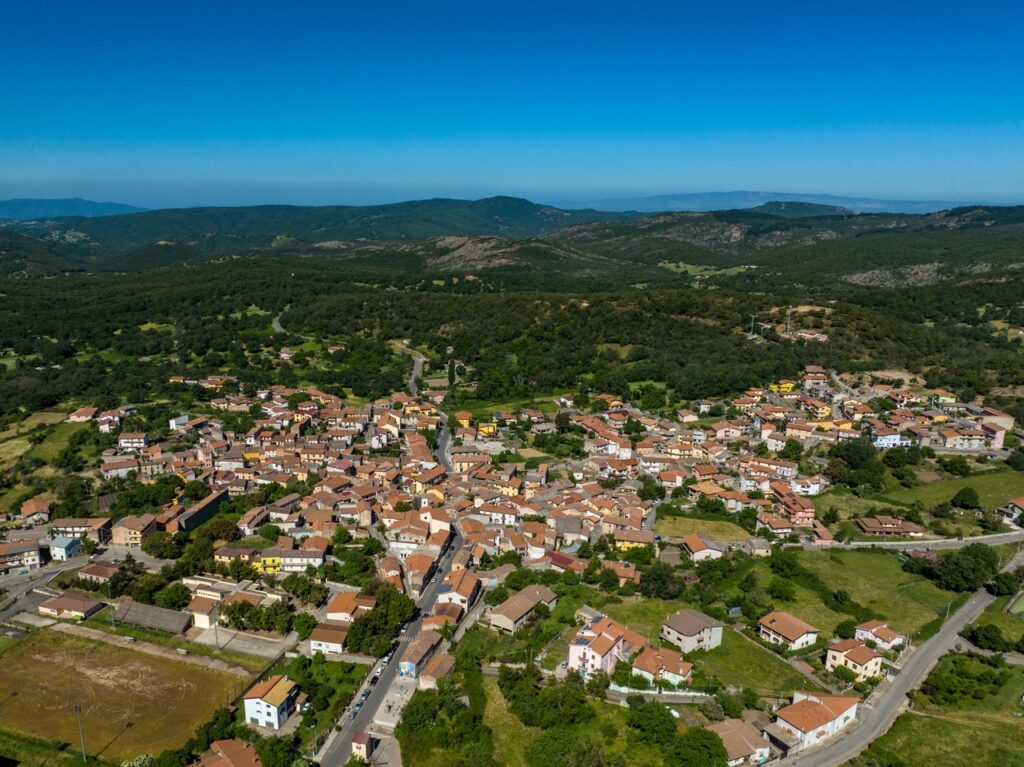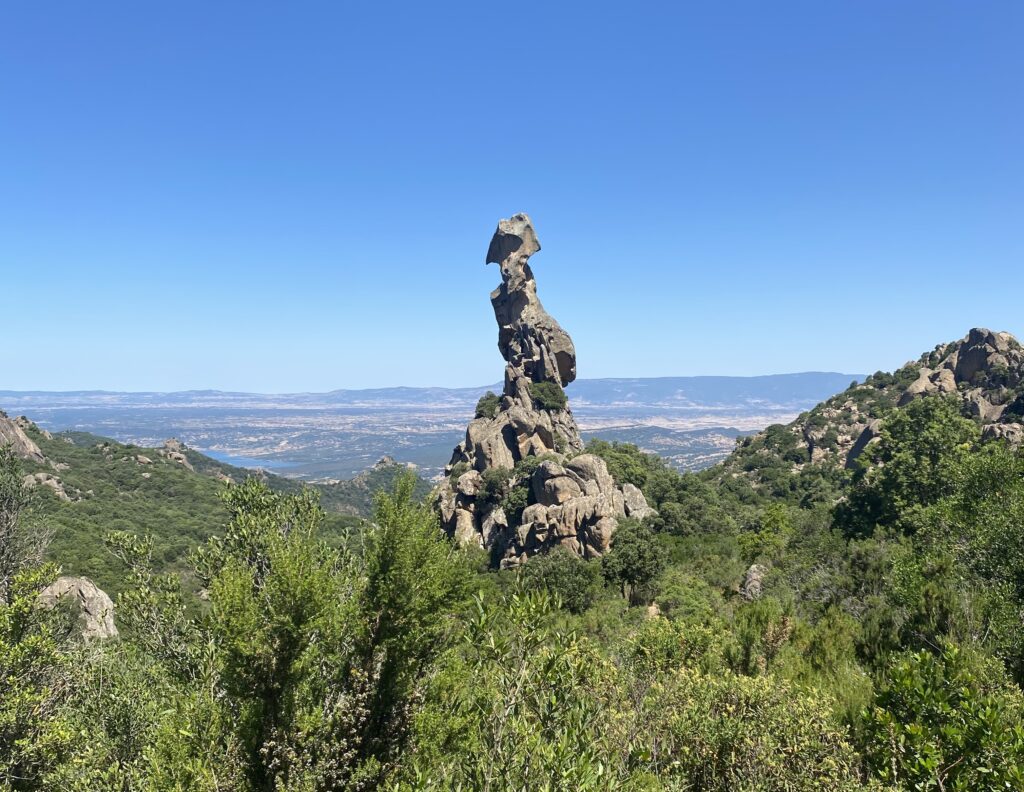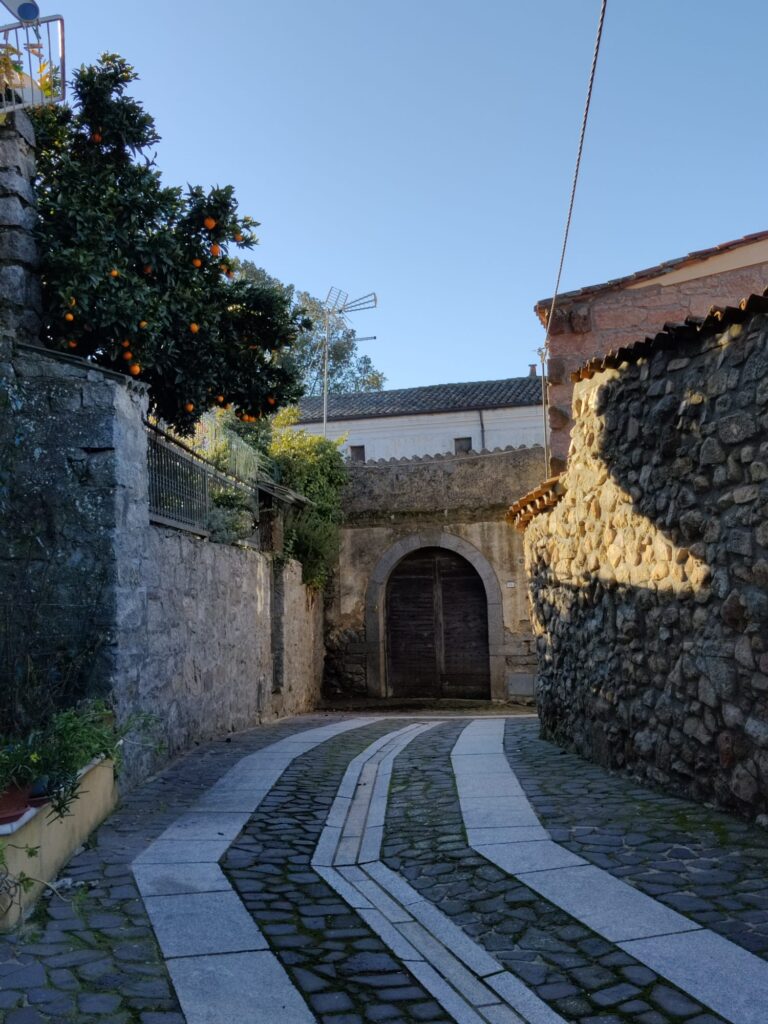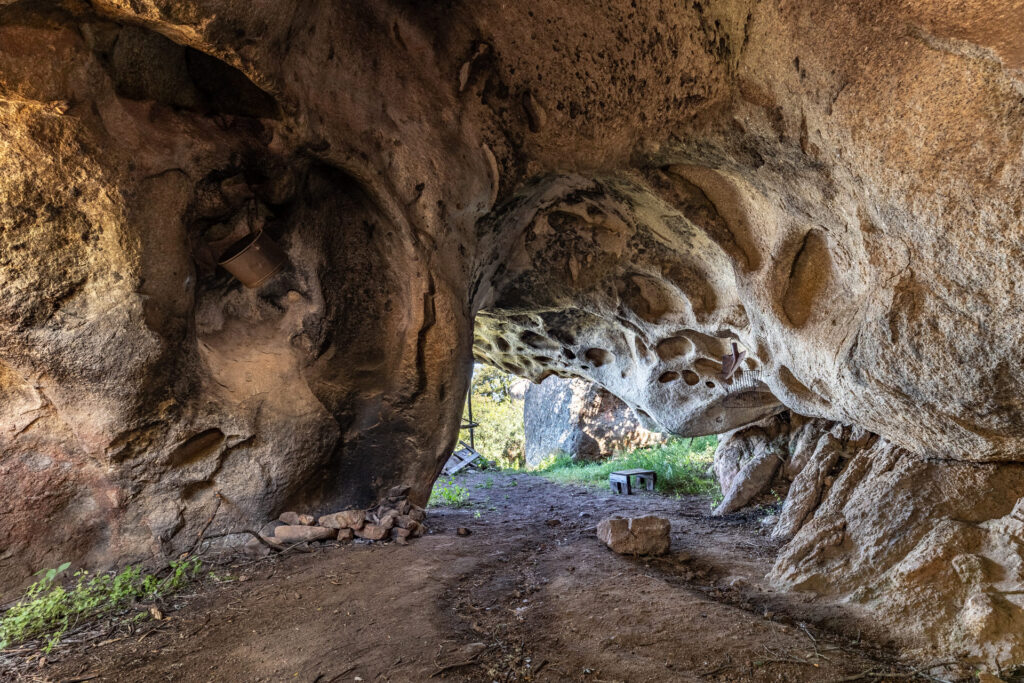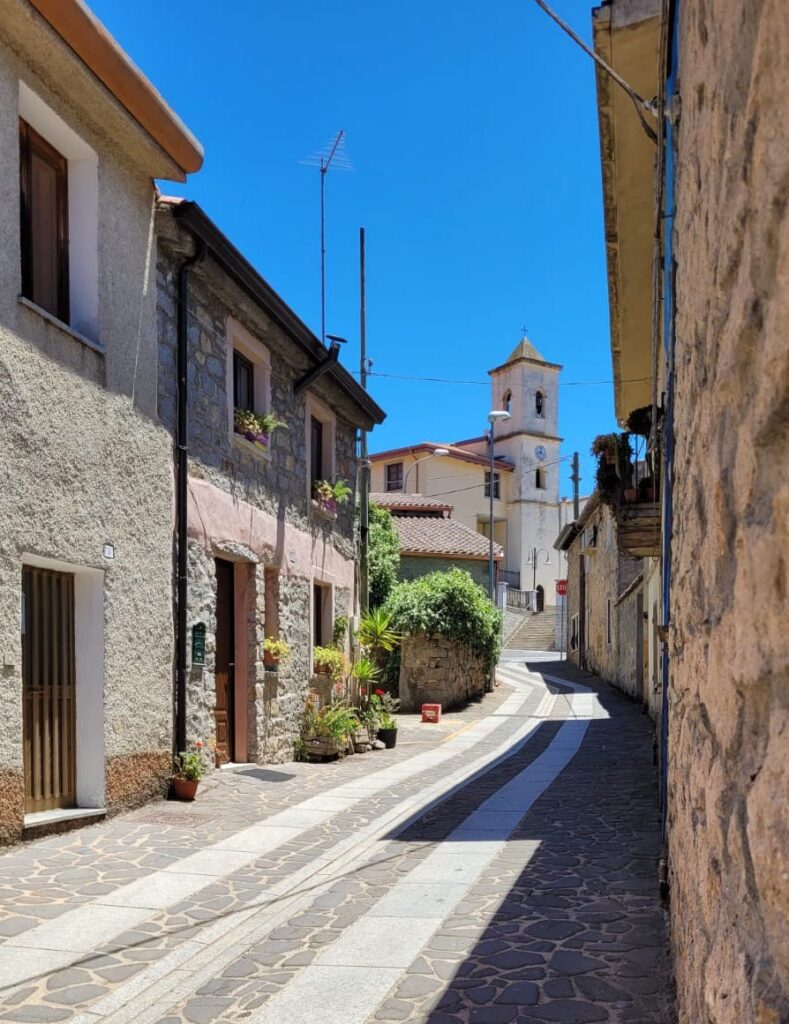Through its legends and stories, Sardinia has always told of an archaic world in which reality and fantasy often come together until they get confused. Austis is also a territory rich in unique legends that refer to life’s great themes, such as love and work, and that preserve traces of ancient religions, pagan rites and legendary characters.
Sa Crabarissa, a poignant love story
The most famous legend set in the Austis area is the one concerning ‘Sa Crabarissa’, the natural monument symbol of our area. According to the legend, a girl originally from Cabras (from which the name of the rock, Sa Crabarissa, derives), a charming village on the western Sardinian coast, fell in love with a shepherd from Austis, whom she met during the winter transhumance that saw the flocks go from the mountains to the plains, where the climate was milder. The two met, fell in love and decided to exchange vows of marriage but when the transhumance ended the shepherd returned to Austis. The girl waited for his return for a long time but finally decided to take a long journey to Austis to understand why her beloved did not return. Once she arrived in the village she found her beloved married to another woman. At that point, the disappointed girl, returning to the plain, was petrified by pain, thus turning into the famous rock. This story, which has been handed down from generation to generation, has a moral and it was in fact often told to young people to invite them never to play with other people’s feelings.
Must-see in Austis
Sa Maschinganna de Tannoro, the witch of deception
Another legend is that of ‘Sa Maschinganna de Tannoro’. Sa Maschinganna is a mythical character belonging to Sardinian tradition who mirrors the devil and takes on ever-changing appearances. According to Austis’ tradition, the character it preferred to impersonate was that of a woman and that is why it is said that Sa Maschinganna is a witch. She lives in the Tannoro forest, a virgin forest where the homonymous stream flows, well away from the town center because, in the presence of a sacred or blessed place, the witch disappears. It especially made fun of shepherds, farmers and people passing through because they were the ones who frequented the countryside more often. Its appearances in this forest were numerous, as witnessed by various people in the area over the years. This testimony is reported in the book Contos de Eranu:
My father had ‘unu cuaddu murru’, a white horse, and one day as he was returning from the countryside he saw a child crying on the banks of the Tannoro river. The boy said that his father had given him up, so he made him get on horseback to accompany him to the village but, at this point, the horse bolted and my father, turning around, saw that the boy, who was “sa Maschinganna”, had donkey feet that shot fire from the hooves, and immediately walked away mocking him.
The peculiarity of the two dialects
Other legends, however, populate Austis. One concerns the dialect. In fact, it is said that in ancient times the town was divided in two by the Corroga river, so that on one side lay the Pastoreddu district while on the other side was the rest of the town. When the winters were very harsh and rainy it was difficult to cross the river and therefore the Pastoreddu district remained so isolated to develop a slightly different dialect, traces of which are still found today in some words, such as “grandfather” which is still called Izazu or Ijaju and the word “I” that some express as Zeo and others as Ijeo.

